Butchers, Bakers and Naval Officers
- 19th March 2025
We continue our series on how members of staff have used the recently released 1921 census to further their own research.
Anthony hoped to learn of the fate of his great-grandfather’s brothers after the First World War having discovered his great grandfather George Henry Roach using the 1939 Register.

My grandfather George Roach and his parents shown on the 1939 Register © Crown Copyright
Using the 1921 Census, I hoped to learn of the fate of my great-grandfather George Henry Roach’s brothers after the First World War having discovered George Henry Roach (Senior) using the 1939 Register.

My grandfather George Roach and his parents shown on the 1939 Register © Crown Copyright
On the 1901 Census, George Henry Roach is shown with three brothers, one of whom was Alfred Thomas Spear Roach, who served with him as a Sapper in the Royal Engineers during the First World War, Stanley Charles Roach who also served as a Dynamo attendant in the RAF and finally William John Roach who was the eldest at 11 years old.
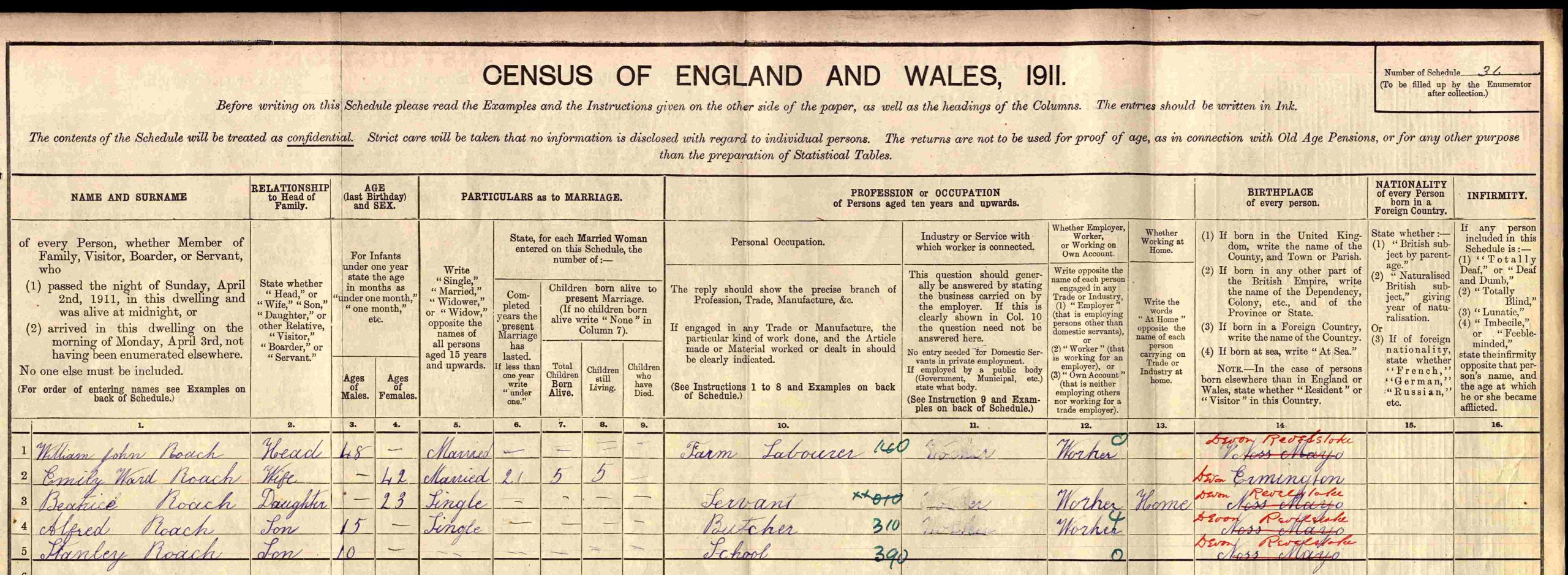
William, Emily, Beatrice, Alfred and Stanley on the 1911 Census © Crown Copyright
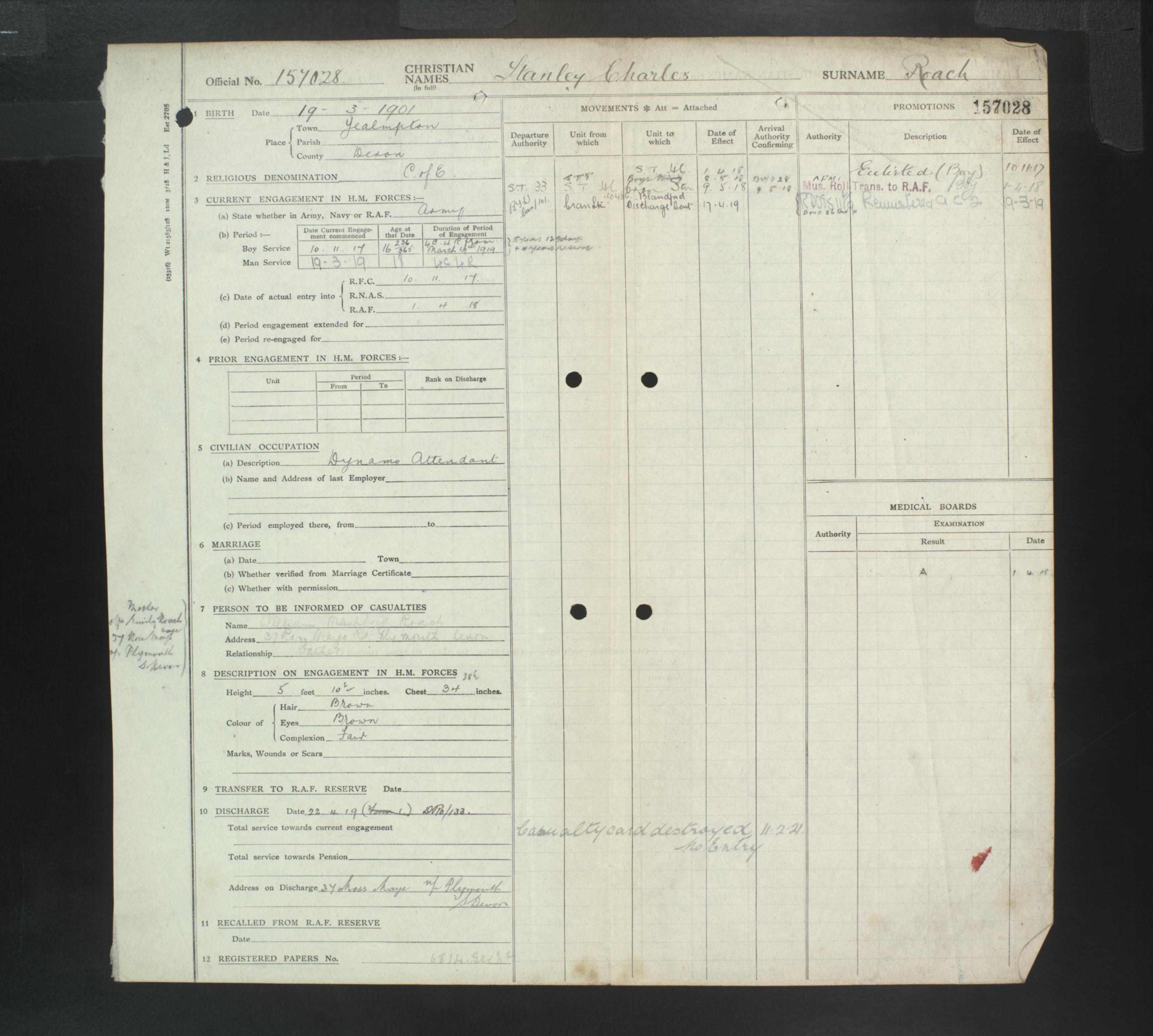
RAF Service record for Stanley Charles Roach showing occupation as a Dynamo attendant © The National Archives (TNA)
George and William *Jnr) are not present on the 1911 Census but using military records held with TNA, I had discovered that George Henry Roach (Senior) and Alfred Thomas Spear Roach were employed as Butchers in Noss Mayo, prior to the outbreak of the First World War, then as Royal Engineers were posted to the 569th (Devon) Army Troop COY R.E. suggesting from their service records and War Diary that they had served in Egypt and the Middle East.

Identity Certificates for both Alfred Thomas Spear Roach and George Henry Roach showing Theatre of War as Egypt © TNA
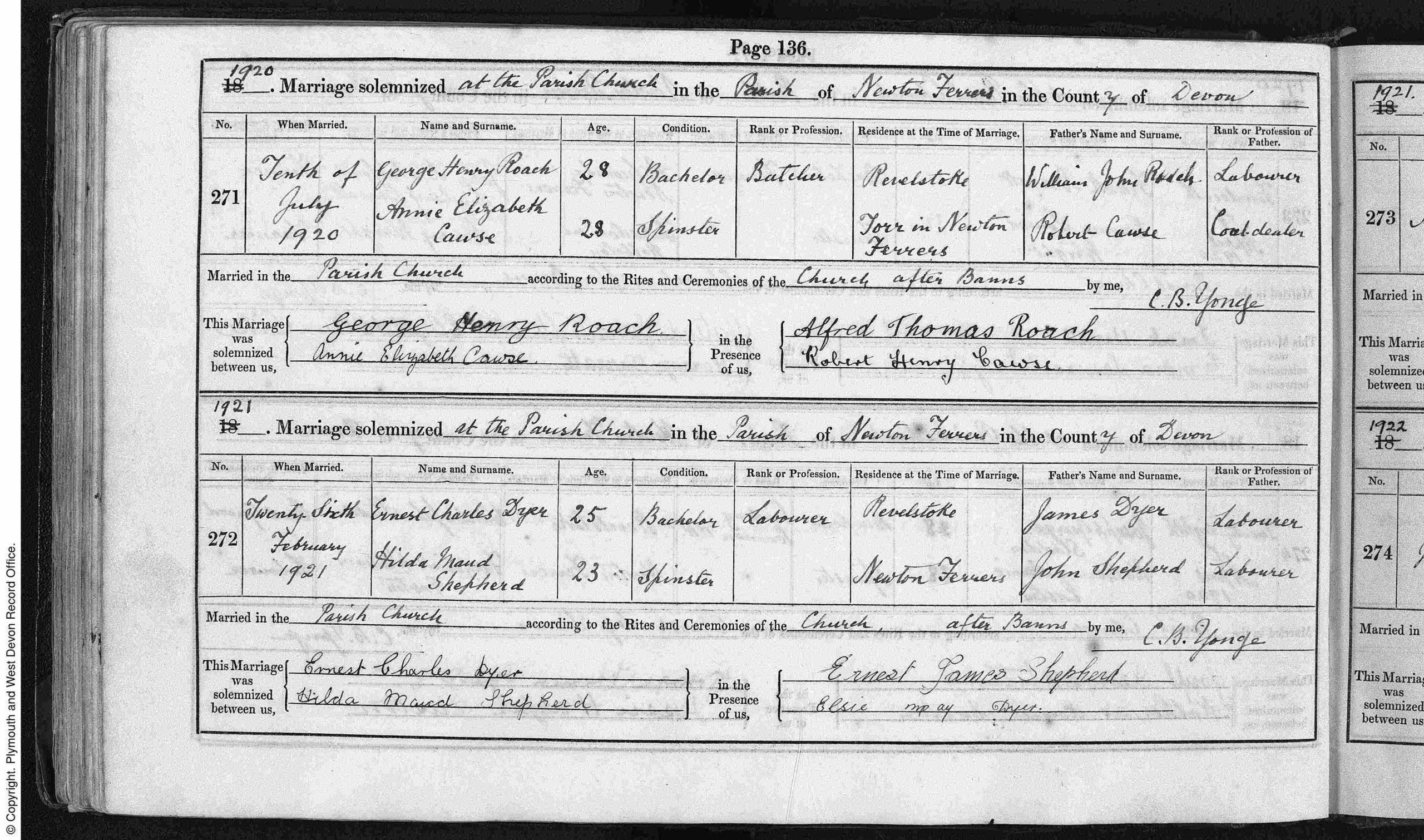
Marriage of George Henry Roach and Annie Elizabeth Cawse at Newton Ferrors on 10th July 1920
I knew that George Henry Roach would later marry Annie Elizabeth Cawse thanks to the Marriage register entry of 1920 (his brother Alfred is a witness) but the 1921 Census reinforces this, with George working for his father-in-law’s Coal Merchants business as a Horseman.

George Henry Roach and Annie Elizabeth Roach (nee Cawse) on the 1921 Census © Crown Copyright
Alfred and Stanley are shown living at Revelstoke working as a Groom and Baker respectively with their father William John Roach and mother Emily Ward Roach on the 1921 Census.
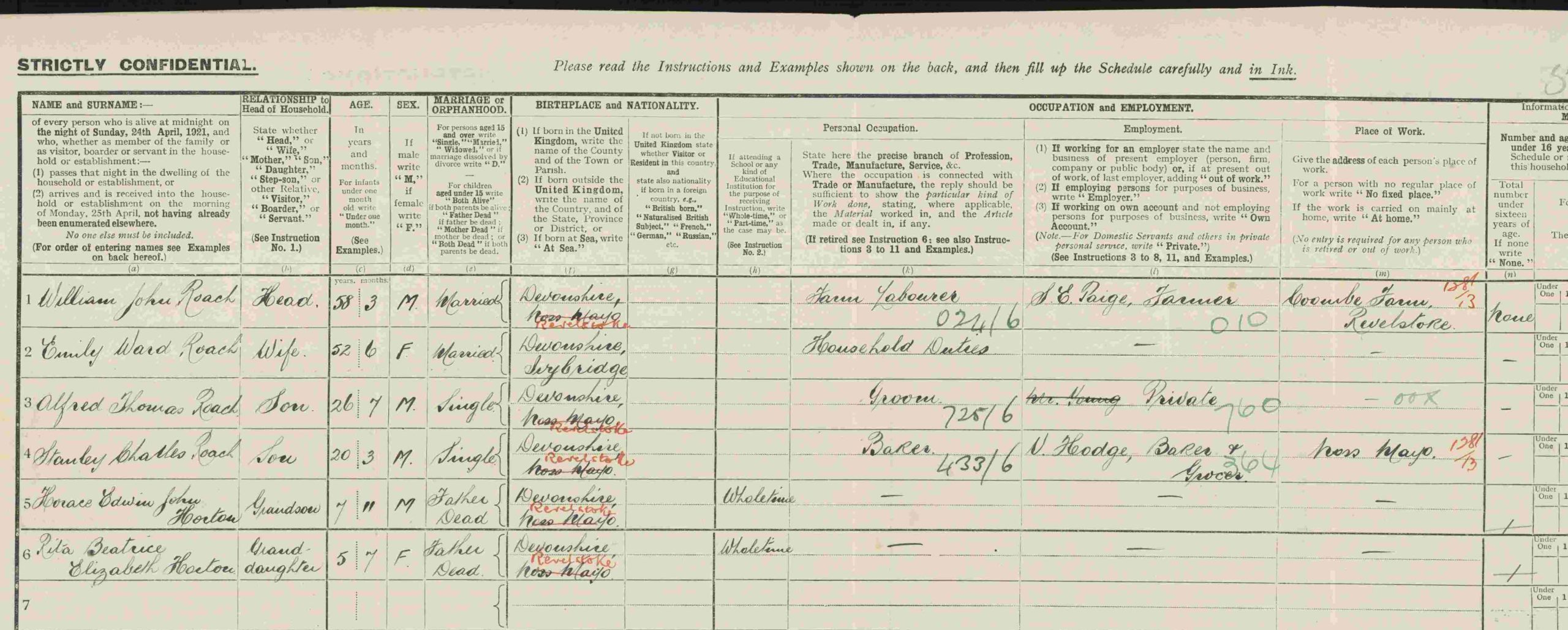
Alfred and Stanley Roach shown in Revelstoke working as a Groom and Baker on the 1921 Census © Crown Copyright
My previous research had failed to unearth anything for William and so I was delighted to discover that he is shown serving as a Petty Officer in the Royal Navy on the 1921 Census married with his wife Minnie from Cornwall and their two children Rosemary and Gordon.
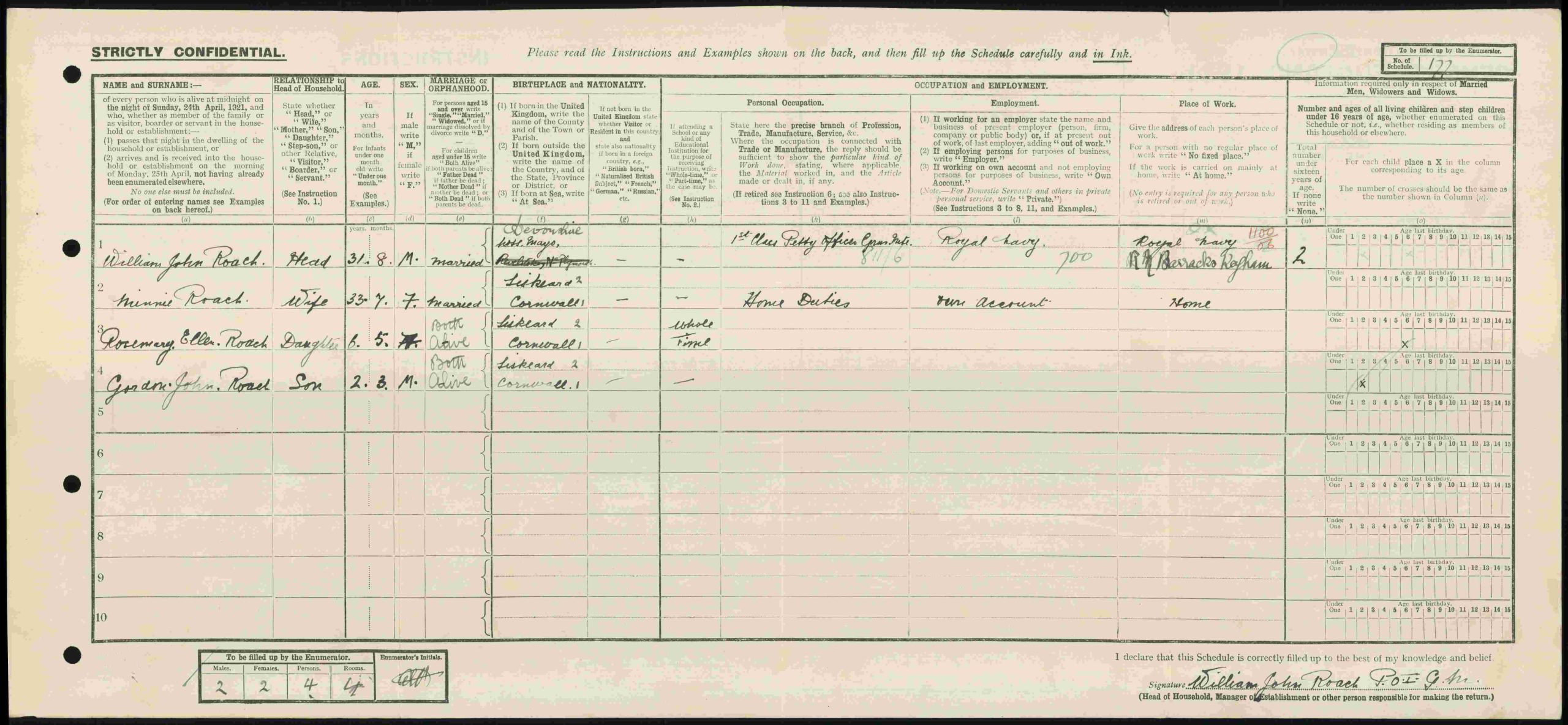
William John Roach with wife Minnie and children Rosemary and Gordon on the 1921 Census © Crown Copyright
Post a Comment